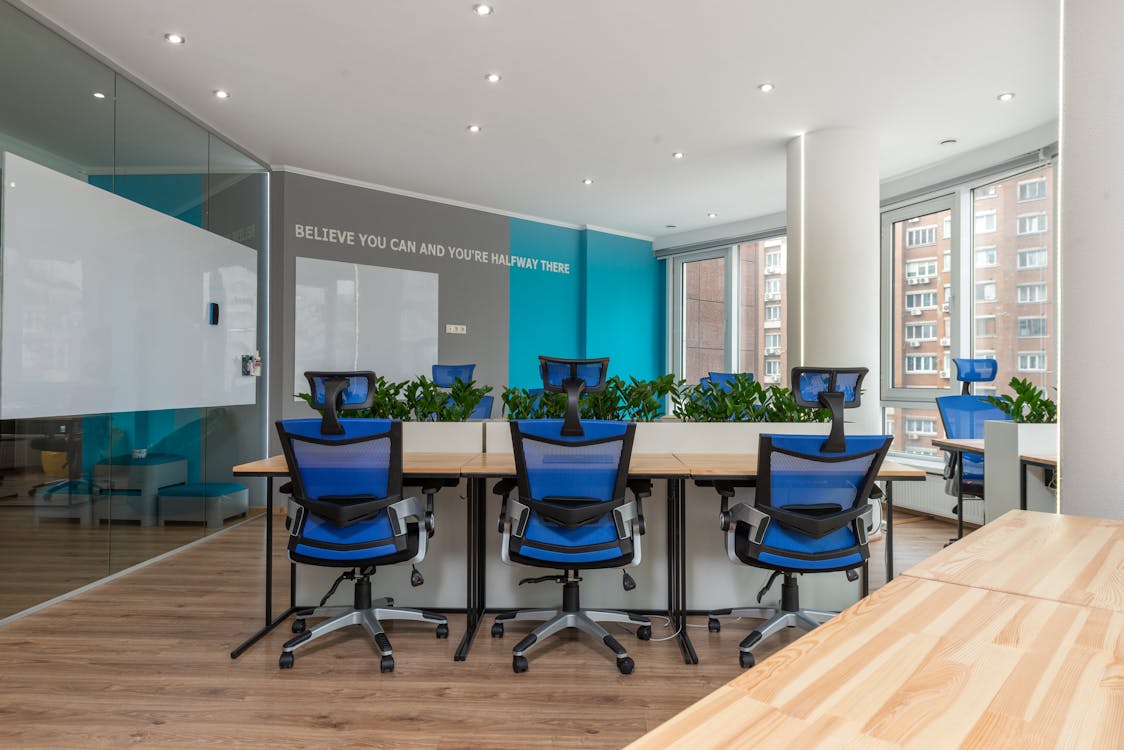13 Stats About Office Layouts to Help You Design Your Office
Movies like office space got us all commenting, out loud, about how ridiculous work culture is and especially cubicle mazes. The great office layout savior, open offices, came around and were supposed to boost productivity and collaboration. Instead, it made us long for the days of privacy. Now, workplaces are undergoing design changes again with activity-based working. Knowing which is the best way to work can be confusing, as pros and cons to all options are endless. Below are some stats that might challenge what you know (and feel) about the major office layouts and ultimately, help you make informed decisions when designing your office.
What are the 3 most popular office design layouts?Traditional Office Layout - A traditional office layout is made up of individual offices that are "built-in" which are reserved for senior staff. Office cubicles are utilized to create employee workspaces from 3 sided partitions. Open Office Floor Plan - An open office plan is a layout in which you accommodate all of your team members and equipment in a single large, open room. Departments or divisions are usually grouped in different parts of the space, but there are very few (if any) dividing walls. Activity Based Work - Activity-based working is a work style that allows employees to choose from a variety of settings according to the nature of what they are doing. This may create open areas, phone booths and cubicles and comfy lounging areas. 
The Stats:1. Out of 1,000 U.S. employees, 76% do not recommend open offices because of; lack of privacy 43%, noise 34% and poor concentration 29%. 21% don't feel like they can work to their full potential. (Bospar) 2. Open-space may lead to stress, conflicts, and high blood pressure according to 90% of recent studies. (Study) 3. Employees working at long open tables (common open-space seating arrangements), were 20% more active than employees in cubicles. (Bureau of Labor Statistics) 4. Only a small percentage of employees would prefer working in a totally open or totally private workplace. Over 77% of employees like to work in an office with a combination of both. (Gensler) 5. 88% of engaged employees have the option to choose where in the office they work. 6. 66% of employees name open office plan layouts as the reason behind higher dissatisfaction and loss of productivity. (UK GBC)
7. Gen Z (55%) and Millennials (56%) prefer open office layouts and being tech savvy are able to remain more productive compared to Gen X (47%) and Baby Boomers (38%). (Poly) 8. 87% of employees prefer cellular offices (such as cubicle workstations) compared to 8% who prefer open space offices. (SSB) 9. Only 44.2% of employees in cellular office layouts say that design has improved productivity. (Memoori) 10. Email and office messaging usage went up by 67% and 75% with open-space layouts. They were supposed to have the opposite effect. (The British Psychological Society) 11. 70% of all U.S. offices follow the open-plan layout. (Forbes) 12. On average open office employees take 3.1 sick days in a year, while employees who worked from home take 1.8 sick days. (NCBI) 13. 31% of workers in the U.S. say they guard their ideas and opinions while on calls because of open space's lack of privacy. They believe this kind of working environment allows people to hear and judge them. (Room)
ConclusionThroughout the decades workplaces and businesses have set up offices according to what saved them the most space and money, then shifted to what they thought would bring the most productivity and collaboration to employees. Nowadays, the shift is moving towards allowing workers to choose for themselves how they work, with options such as activity-based or hybrid work. While the true moral of the story is that there is no one-size-fits-all solution, striking the balance between all workstyles, lifestyles, cost-effectiveness as well as office privacy, personalization and collaboration may be the best place to start. Maybe your office layout is what it is but you want other ways to make your workplace a bit more interesting. Check out this article.
More From This Author
|